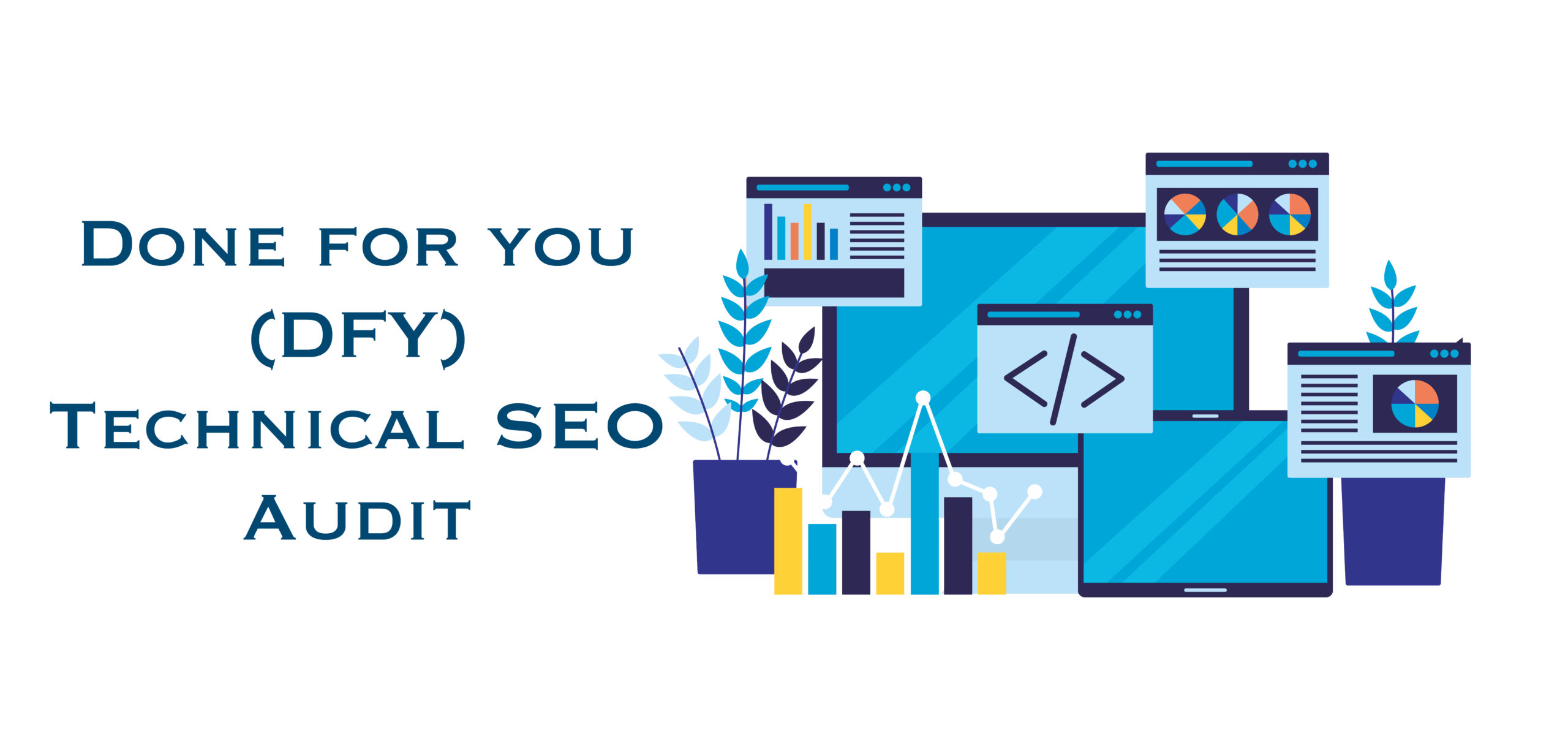In the absence of a technically sound foundation, you would struggle to rank your site highly on page 1 for competitive keywords.
We manage SEO of over 100 websites every month and continuously the largest issues we find blocking new campaigns from achieving top rankings can be traced back to the website or technical issues that were never addressed or overlooked.
It has been found that when a website has undergone these 30 point audits and corrective or remedial action is taken, top rankings for the most difficult keywords as well as SERPs are achievable.
We have divided these 30 points into 3 parts:
- Technical Audit – Screaming Frog
- Technical Audit – Google Search Console
- Technical Audit – Keyword Cannibalization
Using Screaming Frog To Audit Website Technical Issues
Our white label SEO team starts each campaign by performing an initial scan using Screaming Frog. We emphasize on eight key areas of the website.
The Checks To Perform
Protocol – We want to make sure that all pages are being served securely via HTTPS. This quick and simple process will give us a list of, if any, URLs that are still being served via HTTP.
Response Codes – We check for the following: Key Pages returning errors (such as Blocked Resource, Blocked Robots.txt, or No Response), Javascript Redirects (Excessive/Spammy/Important Pages), Excessive/Spammy 3xx Redirections, Meta Refresh Redirects (Excessive/Spammy/Important Pages), 5xx Status Code Errors and 4xx Status Code Errors.
URL – We will especially be looking for: Underscores, Non ASCII Characters, Parameters, and Duplicates.
Page Titles – While auditing the page titles, we are looking for Missing Page Titles, Duplicate Page Titles, Page Titles that are too short, Page Titles that are the same as your H1, Page Titles that do not take up enough pixels, and Multiple Titles Per Page.
Meta Description – We specifically look for Missing Meta Descriptions, Meta descriptions containing over 155 characters, Duplicate Meta Descriptions, Meta descriptions containing less than 70 characters, Meta descriptions having a larger pixel width than 940 pixels, Multiple Meta Descriptions Per Page, Meta descriptions having a pixel width smaller than 400 pixels.
H1 – While auditing the page titles, we look for Duplicates, Missing H Tags, and H Tags above 70 characters.
H2 – same as H1 tags.
Images – Under the image tab in Screaming Frog we can extract data and find potential issues with images being very large since images with large file sizes may affect the performance of the site considerably), and images that have alt text that consists of too many characters and the images missing alt text.
Performance & Usability Issues With Google Search Console
The next phase of the audit leverages the data from Google Search Console. Seven key areas are checked which are integral to the health and performance of the website. In part 2, one of our team members goes over the audit process using Google Search Console.
The Checks To Perform
Performance – We want to download the last sixteen months of data from “Pages”, “Queries”, and “Devices” into an Excel sheet & then sort by Click Through Rate.
Coverage – Download the errors into a csv file.
Sitemaps – Click through to see more information about the sitemap. Compare with other Sitemap data to make sure Google is seeing the URLs in your sitemap, properly reading them, and getting them crawled.
Mobile & Usability – Examine the mobile usability report in Google Search Console & compare & consolidate data into the additional mobile reports.
Manual Actions – Ensure that there are no manual actions that the website.
Security Issues – Ensure that there are no security issues.
Schema – Use the Structured Data Testing Tool for testing that mark-up and schema are error-free.
Using Ahrefs to Find Hidden Keyword Cannibalization
Keyword cannibalization is one of the most predominant issues we encounter during our site audits, a major reason for pages underperforming, and a continuous thorn in the side for Search Engine Optimizations. Our white-label team is adept at discovering these issues as well as implementing counteractive action plans.
The Check To Perform
Organic Keywords –Navigate to organic keywords & export the full keyword list using Ahrefs. Import that into a Google sheet & then highlight duplicate content in the column. You can use the following steps:
#1: select range of cells (for example A1:A7)
#2: menu: Format → Conditional Formatting
#3: Format cells if: [Custom formula is]
#4: =COUNTIF(A:A, A1)>1).
Using The Page Quality Raters Guide For Finding Site Quality Issues
We have found site quality is more significant than ever before. With the advancement in Google’s machine learning algorithms, they are much better at identifying advanced concepts of authority, quality, and trust.
The Checks To Perform
Page Purpose – When the purpose isn’t clear, think about revamping the content & metadata to more briefly reflecting the topic of the page. You can also consider segregating topics depending on best practices for site architecture.
YMYL – Some types of pages might potentially affect the future health, happiness, safety of users or financial stability. Make sure the E-A-T compliance is a hundred percent.
Main Content – Make sure that there is more high-quality main content that is in equivalence with the highest-ranking competitors. Ensure that secondary content provides value to the user journey and limit it to a minimum.
Ad Quality – Make sure all sponsored content/links and/or ads are properly labeled. Ensure the ads aren’t damaging the user experience. Remove ads that block the main content, pop-ups that are difficult to remove, etc.
Authorship – Make that your website articulates what entity is responsible for the main content on the site. Ensure each page is represented by the aforementioned author or an entity. Have a transparent about us page and if possible create real company pages.
Contact – Ensure you have a live contact page and it functions properly. Offer multiple ways if possible to contact the site admin (Email, address, phone number, contact forms, etc.)
eCommerce Audit –Reputation and trust are significant for websites providing products or services for sale. Add exchanges, payment policies, refund terms, etc.
Off-site Sentiment – Are you aware that the things that people say about your business off of your website are used as a ranking factor? At the SMX conference in the fall of 2017, Google’s Gary Illyes commented twice that off-site sentiment is critical.
Off-site Reputation – This section is comparable to the last section. When a business is listed in BBB, Yelp, Amazon, Google Shopping, this can be a sign of a legitimate business. When you don’t have any listings in these areas, but their competitors do, then this is something that must be improved upon.
E-A-T – E-A-T is one of the most critical parts of Google’s assessment of quality for many websites. In case your website is a YMYL site, then E-A-T is very important. Lack of E-A-T is a critical issue. For some of the websites, this cannot be fixed. Though, some sites have experienced great ranking improvements by improving upon their E-A-T.
Site Functions – Google expects that the buttons on a website, the pages and other interactive elements must function as they should.
Hacked/Spam Pages – Google doesn’t want to show users hacked content. In some cases, Google can algorithmically pick up hacked content and give website owners a manual warning in GSC (Google Search Console).
Index Check – The website must have a healthy number of indexed pages, the top-level domain must appear first while performing a website index check.
Viable Backlink Authority – The website and target pages must be within parity of other high-ranking sites in terms of the number of backlinks, the velocity of links, & common link sources.
Implementing Your Audit Action Plan
SEO may seem to take a long time to realize gains or Return on Investment (ROI). That is why we identified these quality and technical guidelines that you can employ early in a Search Engine Optimization campaign for driving the fastest results possible and shorten the amount of time taken to gain the full benefit of increased site traffic and top rankings. Starting your campaign off on a solid foundation, focusing on-site quality and fixing keyword cannibalization, can mostly drive significant SERP improvements by themselves very quickly. And the faster you can get a website to rank, the better your client retention rates will become.
Better DFY SEO Options – Managed Services For Your Agency
Our aim is to help our agency partners retain clients for the long term. Therefore we have invested extensively in upgraded campaign tracking and reporting. Every Done For You (DFY) SEO and Traffic Links campaign comprises a custom Google Data Studio & Analytics set-up, white-label campaign update videos, and, rank tracking.
We emphasize fast, sustainable wins, custom analytics, month over month improvements and reporting Key Performance Indicators designed to show the value as well as continued high-level campaign performance.













Trackbacks/Pingbacks